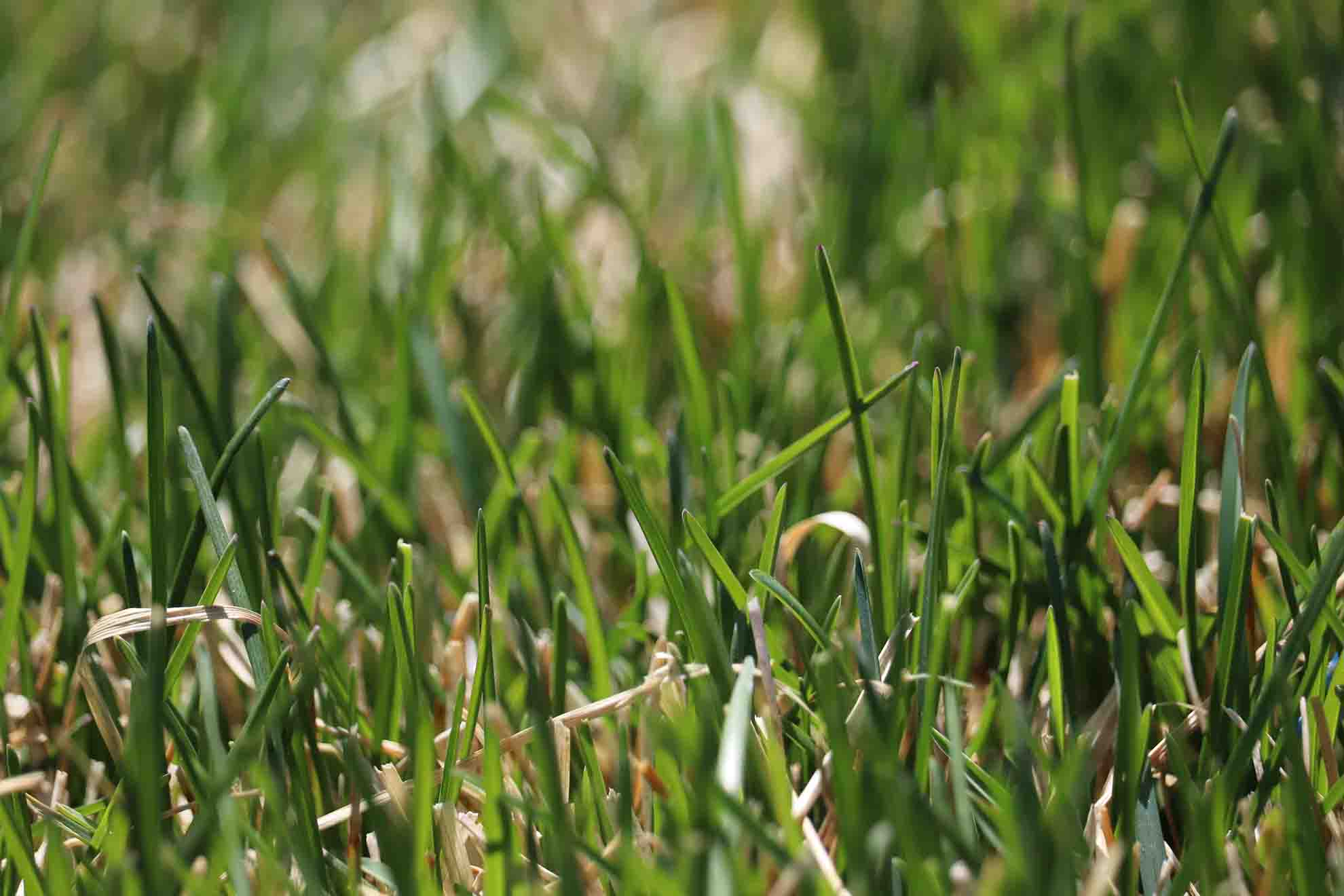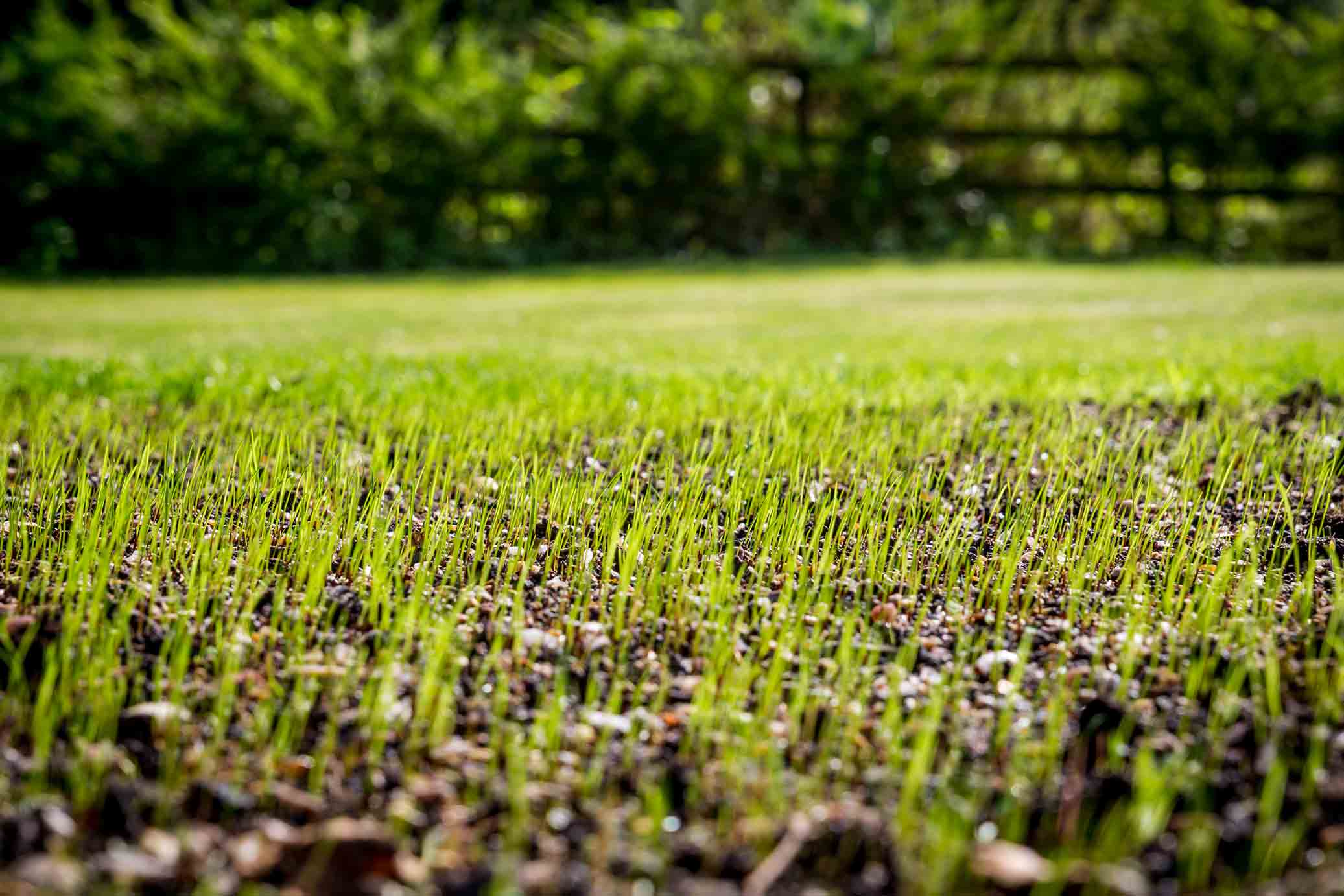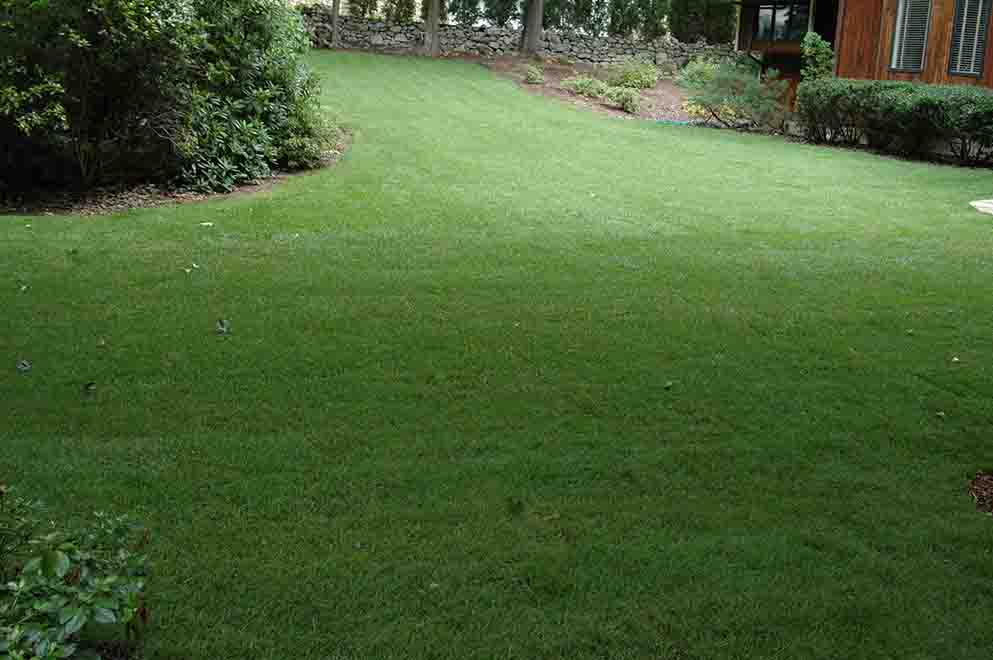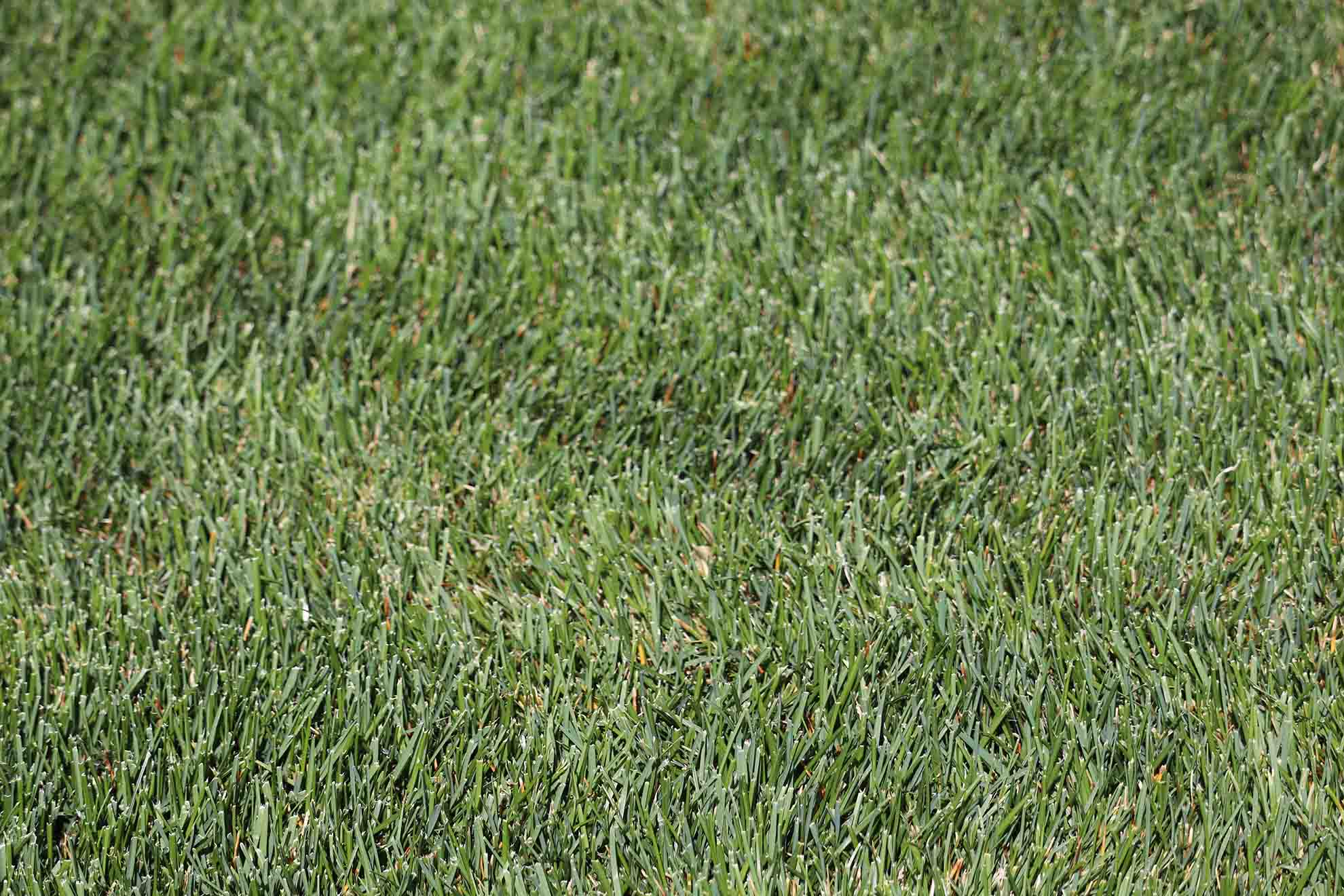Last Updated:
November 6, 2025
Kentucky bluegrass is a favorite cool-season species for homeowners throughout Utah’s suburbs and mountain-valley communities. Because Utah’s climate features cold winters, mild springs, and hot, dry summers, Kentucky bluegrass offers a visually appealing option that performs well during prime growing periods.
Unlike low-maintenance turf varieties, Kentucky bluegrass benefits from consistent mowing, fertilizing, and watering practices. This post will teach you the best lawn care techniques to get the most out of this impressive turf.

Despite Utah’s arid tendencies, Kentucky bluegrass remains one of the most widely used turfgrasses in residential landscapes across the Wasatch Front and surrounding areas. It tolerates cold weather exceptionally well, which suits Utah’s extended winters. In addition, this turf spreads through underground rhizomes, giving it the ability to fill in thin spaces naturally. That trait helps repair wear from children, pets, or backyard gatherings without requiring constant overseeding.
Kentucky bluegrass thrives best where it receives plenty of sunlight, though it can handle brief periods of light shade, especially in higher-elevation neighborhoods. When maintained correctly, the lawn surface becomes thick, smooth, and visually consistent, offering a premium appearance homeowners love.
Basic Tolerances:

This cool-season turf is prized for its fine, silky texture and its cool blue-green leaf color. When properly watered and fed, its growth pattern weaves together tightly, creating a seamless surface with impressive visual appeal. Because of its elegant look, it’s commonly found on golf courses, sports fields, and upscale residential landscapes across northern Utah.
Homeowners focused on curb appeal find Kentucky bluegrass particularly appealing. While it demands careful upkeep, its self-repairing growth habit and attractive color make the effort worthwhile.
Distinguishing Characteristics:

Kentucky bluegrass can be grown from seed or installed as sod, depending on how quickly you want results. Because Utah’s weather transitions sharply from season to season, timing is crucial for successful establishment.
Early fall is ideal in most Utah communities. Soil warmth encourages germination, while cooler daytime temperatures limit weed pressure. Spring planting can work as well, but homeowners may need to stay ahead of crabgrass and annual weeds that thrive in that window.
Start by removing weeds and debris, then check soil pH levels. Kentucky bluegrass prefers soil between 6 and 7. Utah’s native soils often lean alkaline, so elemental sulfur or other amendments may help. Break up compacted ground 4–6 inches deep and blend in organic matter to improve moisture retention.
Spread 2–2.5 pounds of seed per 1,000 square feet. Disperse seed uniformly with a broadcast spreader, then lightly rake the surface. A thin layer of peat moss or compost can help prevent seed from drying out in Utah’s dry air.
During the first two to three weeks, keep the soil consistently damp. Because Utah’s climate evaporates moisture quickly, short, frequent watering sessions typically work best at first. Once seedlings are established, shift to deeper, less frequent irrigation to help roots dive downward.

As temperatures begin to rise, Kentucky bluegrass exits winter dormancy and grows aggressively.
Hot, dry air is the biggest challenge for Utah lawns.
Cool weather helps Kentucky bluegrass recover from summer stress.
Dormancy sets in once soil temperatures drop.

While Kentucky bluegrass can be stunning, it’s not without limitations. Its root system tends to be shallower than other turf species, making it vulnerable during prolonged heat waves. Without deep, infrequent watering, it may turn tan and enter dormancy to protect itself.
Shade can also be problematic. Dense canopies from mature trees may require mixing in shade-tolerant species to maintain consistent coverage. Germination isn’t rapid, it may take up to three weeks for seeds to show meaningful progress, so patience is key.
On the positive side, its rhizomes gradually squeeze out weed competition. Once fully established, most lawns become denser and easier to maintain over time.
For Utah homeowners seeking a lush, classic lawn, Kentucky bluegrass delivers durability, elegance, and reliable performance. With attention to irrigation, seasonal fertilizing, and thoughtful mowing practices, this turf can look rich and healthy throughout the growing season.
If you need professional help establishing or maintaining Kentucky bluegrass in Utah, Holmes is here to help! We provide comprehensive lawn fertilization services tailored to the specific needs of Salt Lake City lawns and grass types. Call us today for a better Utah lawn!
How To Care For Kentucky Bluegrass In Utah Lawns
Kentucky bluegrass is beloved as one of the most beautiful and comfortable turf types available. Come learn how to maintain this grass in your Utah lawn.
Learn MoreHow To Care For Perennial Ryegrass In Utah Lawns
This post explores why perennial ryegrass is perfect for Utah homeowners who want a resilient lawn that looks great!
Learn MoreHow To Care For Tall Fescue In Utah Lawns
This blog post explores what makes tall fescue one of the most popular grass types in Utah, and what steps you can take to maintain a tall fescue lawn.
Learn More